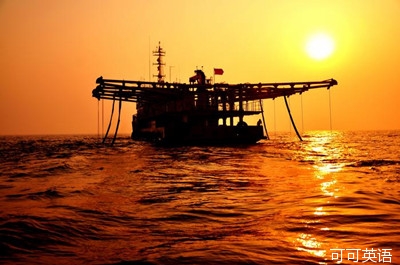That's an air gun.
这声音来自于空气枪。
By exploding compressed air underwater, scientists map the subsurface of the seafloor.
通过爆破水下压缩的空气,科学家们可以绘制出海底的地下分布图。
The process can reveal new deposits of fossil fuels and other important information.
从而开发出新的石化燃料矿藏分布带以及获得其它方面的重要信息。
and now industry has permission to use air guns off the U.S. east coast. Which means more dead whales.
而如今美国已经同意在其东海岸地区使用这种空气枪进行操作。

Cetaceans and other marine life rely on their ears to navigate.
鲸类动物以及其它海洋生物依靠耳朵来辨别方向。
Air guns deafen them, if not kill them outright,
如果没能直接杀死他们,也会将它们震聋,
as the U.S. Department of the Interior admits.
因为美国内政部门已经批准空气枪使用许可。
The sound is 250 decibels or more, much louder than a jet engine.
气枪的声噪在250分贝以上,比喷气式发动机引擎启动时候的声音要大很多。
Dozens of melon-headed whales washed up dead on Madagascar beaches following similar seismic air gun testing by ExxonMobil in 2008.
2008年ExxonMobil空气枪公司测试模拟地震引起的声频使用空气枪的时候就造成了大批头部肿胀的鲸类尸体被冲上马达加斯加海岸。
At new risk are cetaceans like the North Atlantic right whales.
对北大西洋露脊鲸这类鲸目科动物来讲同样面临着这种新的致命危险。
Five hundred or fewer remain.
目前只有500头或者更少数量残存。
They'll have something like dynamite going off in their oceanic living room every 10 seconds for days or even weeks at a time now.
他们在海洋的家现在每天或者每周每隔10秒就会遭受炸药类物质的袭击。
Alternatives exist, from seafloor vibration-producers to revamped air guns that produce less sound but equally good images.
还有至于其它比如从地下振动源入手或者翻修更新制作出更少声噪但画面质量不变的空气枪的勘探方式。
Such choices might provide a little more peace and quiet in what's become a very noisy ocean.
这些其它选择或许能为已经变得非常吵闹的海洋环境带来一些平静和安详。













